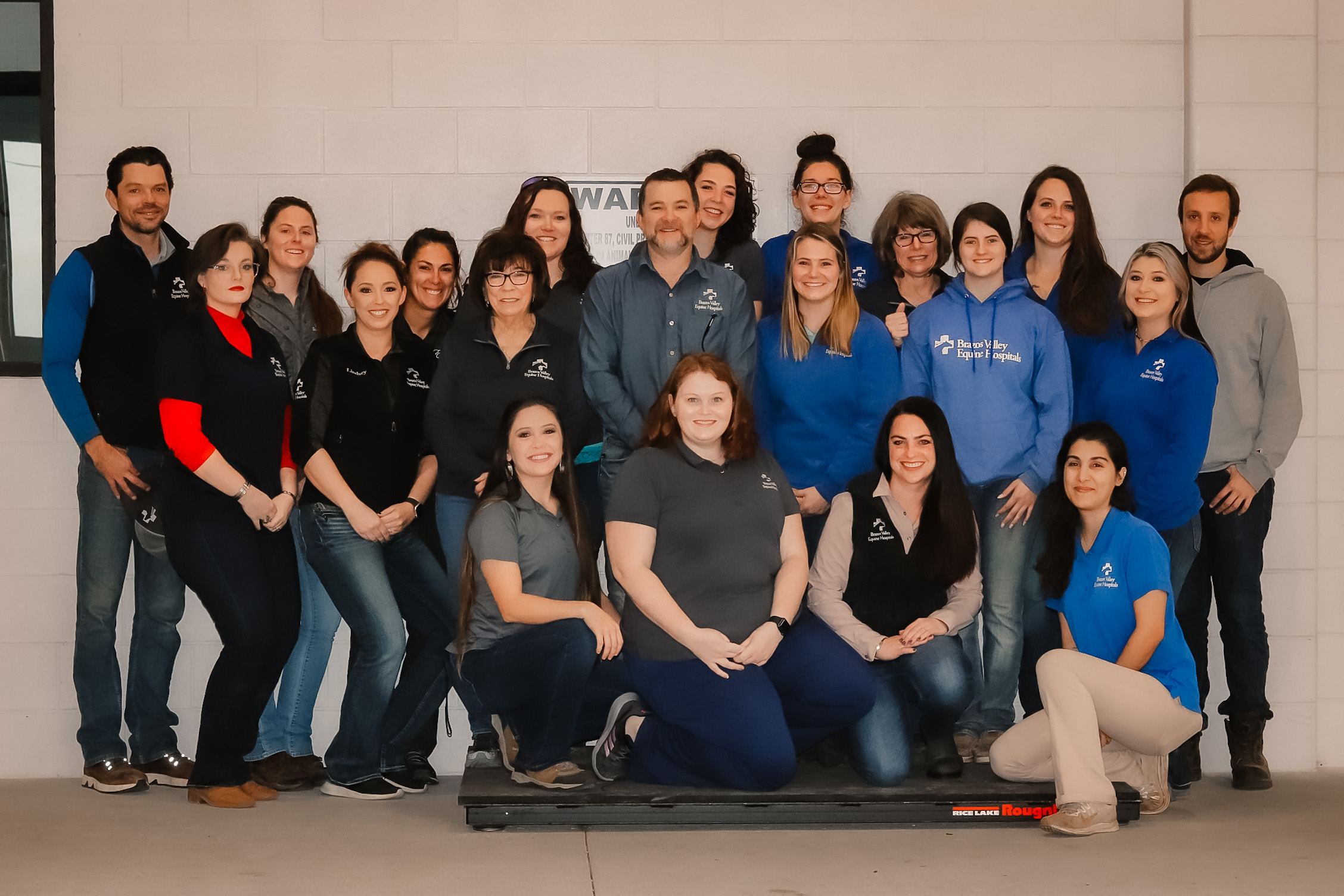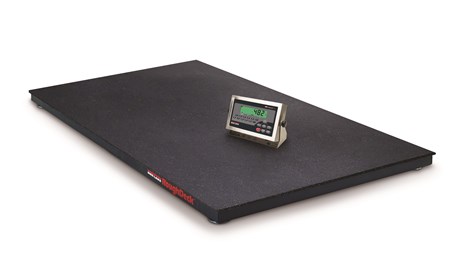Is the website displaying in the correct language? Please confirm or select a different language.
Your region has been set automatically. Please confirm or select a different region.
Bonds of Trust
Brazos Valley Equine Hospital worked with Midwest Veterinary Supply when they added a RoughDeck® EQ equine scale to their treatment facility, helping them provide the best care and build lasting relationships with their patients.
Publish Date: 03/11/2022
Passionate Care
Brazos Valley Equine Hospital opened their doors in 1987 in Navasota, Texas when Dr. Terrell “T-Bone” Buchanan saw the opportunity to take new strides in his passion for healing horses. The teams at BVEH approach equine care on a relationship-by-relationship approach, building trust with animals and their owners to provide the best long-term care. Brazos Valley has multiple facilities to provide proper care and treatment to a large number of horses in Texas.
The team at the Salado location is skilled in surgical procedures, foal health and treating a variety of health threats including laminitis and metabolic issues. Dr. Shannon Darby started working with BVEH in October 2021 and she practices internal medicine with a special interest in foal health and growth. She provides a combination of hospital and off-site treatment, allowing her to see the housing conditions of the animals and determine if they are impacting animal health.

Dr. Jamie Ashbrook has been with BVEH since an internship in 2016 and now focuses on preventative medicine and treatment plans for horses facing endocrine and metabolic issues, as well as laminitis. Equine Metabolic Syndrome (EMS) and pituitary pars intermedia dysfunction (PPID), sometimes called Equine Cushing’s disease, are both weight-related illnesses that have been linked to laminitis.
The surgical team at Salado relies on accurate weights for anesthetic dosing; even small changes in the dose can make a huge difference. When you’re treating everything from miniature horses and donkeys to draft horses, an accurate scale makes a big difference.
No Horsing Around with Accuracy
It’s common for owners to underestimate their horse’s weight, in part because they may not notice the gradual weight increase when they see the animal every day. For animals with regional weight adiposity, accumulations of fat cells commonly around the neck and tailhead, the only way to accurately capture weight is with a scale. Weight tapes don’t measure weight adiposity and can only provide estimates for many animals. Average size does not mean average weight for all horses.
When deciding what scale to add to their facility, BVEH staff worked with Midwest Veterinary Supply to find the right fit. Midwest Veterinary Supply has been providing a variety of animal care solutions since 1961. They worked with BVEH to understand their weighing needs and recommend the best scale for their facility.
Salado BVEH staff planned to install the scale along a wall in one of their treatment barns. It has a concrete floor and contains a large lameness pad, holding stalls and a large area to work the horses for baseline movement analysis. Staff wanted to be able to lead horses to the scale along the wall and around the lameness pad.
After reviewing several models, BVEH staff chose Rice Lake Weighing Systems’ RoughDeck® EQ equine scale and 482 Legend Series weight indicator. The RoughDeck EQ has a durable steel frame, low profile and an easy-to-use weight display perfect for operations at BVEH.
Dr. Ashbrook said the low step up has been easy for their patients to use. She has seen models that are taller and require long, sometimes thin ramps most horses don’t like to walk on. The RoughDeck EQ’s included stall mat prevents slips which is crucial when treating patients with laminitis or joint issues, but it also reduces noise to help keep skittish patients calm.
Some horses can be claustrophobic if they’re led to close to a wall, but the RoughDeck EQ has a platform of 4 feet by 6 feet, giving animals enough space to comfortably stand on the scale. Dr. Darby said, “most of the horses are champs [using the scale] because they’re used to trailer loading. The yearlings get a little spooked, but with patience it works well.” Dr. Ashbrook agreed and added that yearlings who are still learning can stand diagonally on the scale, keeping their faces away from the wall while the veterinary team records their weight.

Dedicated Care from Foals to Senior Horses
Dr. Darby weighs foals when they are 12 hours old and every day after that as long as they are at the Salado facility to accurately track growth. “We lead the foals away from hospitalized patients first thing in the morning so it’s calm and they don’t get frightened by other animals,” Dr. Darby said of weighing foals.
Internal conditions can be caught early when foal weight gain or loss is accurately tracked. This allows veterinarians to provide intervention care when necessary, ensuring foal health and growth are normal. Dr. Darby also weighs mares postpartum, monitoring their weight gain and recovery to help determine whether they are producing enough milk to feed their foal or if supplemental feeding is necessary.
Having the RoughDeck EQ at their Salado facility has also allowed many horse owners to see the reality of their animal’s weight. Dr. Ashbrook says some horse owners “weigh their trailer, then load their horse and reweigh the trailer to try to find their [horse’s] weight.” This type of scale won’t have the appropriate resolution to correctly capture horse weight. At least twice a year, she talks to owners about the importance of accurately weighing their horses before they face life-threatening diseases.
Dr. Ashbrook explained, “sometimes people will use a ‘cheater’ solution and give their animals thyroid medication to help regulate weight, but that only works for the months the animal is on the medication. Just like humans, the only way to see long-term improvement is with lifestyle changes.”
Exercise and diet changes, often based on percentage of the horse’s body weight, are recommended but for animals with laminitis, diet is the only change available. Horses with EMS or PPID often develop insulin resistance, putting greater importance on regulated diets, including clearing paddocks of excess grass, which is high in sugars.


Some horses with PPID have a hard time gaining or maintaining a healthy weight and when they are over 20 years old, they need a senior diet as well as high-fat supplements. While a monthly weigh-in is the best way to ensure an adjusted diet is working, Dr. Ashbrook also advises owners to take a weekly photo of their horse to help them see the progress. “People like numbers and the specific weight data our scale provides,” Dr. Ashbrook said.
Dr. Darby said an added benefit of the RoughDeck EQ is being able to quickly switch the scale from kilograms to pounds. While BVEH uses kilograms for most of their measurements, horse owners typically prefer to know their horse’s exact weight in pounds. The 482 Legend weight indicator allows staff to record weight in pounds or kilograms without manually doing the conversion.
BVEH staff have grown bonds of trust with the horses they see and their owners. When someone brings their horse to BVEH, they know their animal will be treated with exceptional care and long-term health in mind. The RoughDeck EQ equine scale helps BVEH ensure they’re providing the best care plans.
Subscribe to Rice Lake Magazine
Sign in or create a Rice Lake website account to request a Rice Lake Magazine filled with application stories like this one be sent to you.
Account Sign In Create an Account


 My Account
My Account



